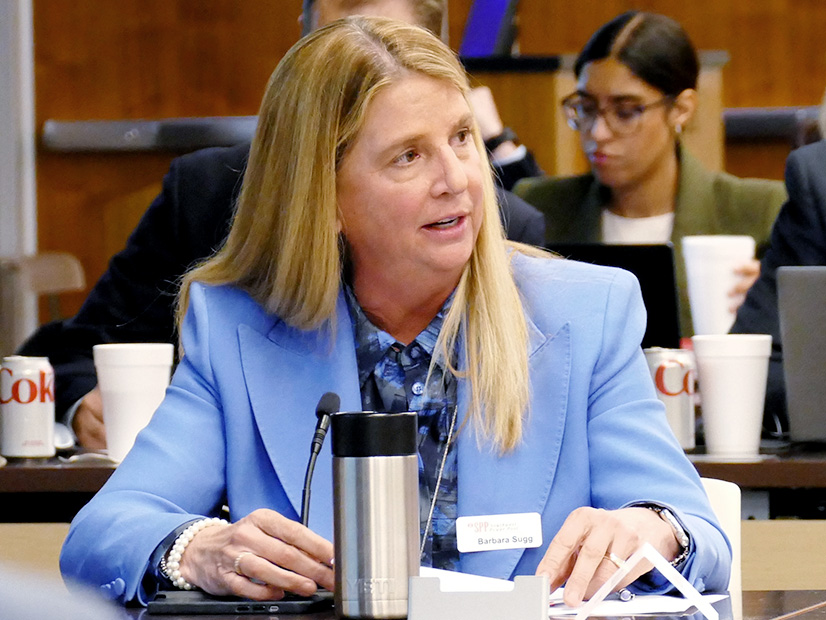During SPP’s quarterly board meeting in October, CEO Barbara Sugg reflected on her tenure, which began shortly before the COVID-19 pandemic shut down the world in 2020.
“It is nice that after three and a half years as the CEO, we’re not talking about the pandemic anymore,” she told directors and stakeholders. “And we haven’t had a recent 100-year storm [in 2023].”
True. While the past year did not include a winter storm like those in February 2021 (Uri) and December 2022 (Elliott), it did include record-breaking heat during the summer that taxed the SPP system.
The grid operator broke the previous all-time peak several times before finally registering a record of 56.2 GW in August, a month during which it issued six conservative operations advisories for its footprint. Capacity dropped to ‑200 MW at one point during the summer, second only to the losses the RTO suffered during Winter Storm Uri. Imports from neighbors saved SPP both times.
“The summer was particularly challenging for us. It really tested our operators and your system operators as well,” Sugg told stakeholders. “The summer peak was 5% higher than the last summer, which was 5% higher than the summer before, which is incredible.”
Sugg said she is particularly concerned about the growth in demand and the variability of renewable resources. She pointed to a day in June when wind and solar resources produced only 111 MW at one point.
“That helps us really think about what we need to do to maintain reliability in the volatile climate,” she said. “The operating conditions certainly highlight the importance of maintaining the generation fleet and getting accreditation right for both conventional and renewable resources, and getting that to be as accurate as it can be.”
To that end, SPP created the Resource and Energy Adequacy Leadership (REAL) Team to mitigate resource adequacy risks and develop policies on fuel assurance, demand response and accreditation. The team — a cooperative effort between the Board of Directors, state regulators and stakeholders — has already signed off on performance-based accreditation for conventional resources and effective load-carrying capability accreditation for wind, solar and storage resources.
The REAL Team is waiting on the biennial loss-of-load expectation study to be finalized this spring. The study will fuel the effort to deliver winter and summer planning reserve margins to the team and to the July governance meetings.
FERC added to the REAL Team’s workload in November when it rejected SPP’s proposed winter resource adequacy requirement. However, the commission said the RTO can address FERC’s concerns and resubmit the proposal (ER23-2781). (See ‘Therapy Session’: SPP REAL Team Reviews Draft LOLE Study.)
Coming on the heels of Winter Storm Elliott, SPP set as its first goal improving grid resilience to prepare for extreme weather events. Staff have included winter scenarios in its 2024 and 2025 transmission plans and completed numerous recommendations from its review of the recent winter storms.
Another major priority for SPP has been improving a generator interconnection queue that contains more than 500 projects and more than 100 GW of capacity. Sugg said the RTO is still on track to meet its stated goal of clearing the original GI backlog and the 2022 cluster by the end of this year, having processed 93 GI agreements last year. Staff processed 37 agreements in 2022.
“I’m actually extremely optimistic about how far we will get with the ’22 and ’23 clusters … which is a far cry from where we were years ago when you were looking at four or five years to get answers on your generator interconnection requests,” Sugg said.
SPP also celebrated a $464 million grant from the Department of Energy to help fund its joint targeted interconnection queue projects with MISO. The portfolio and its five high-voltage transmission lines, recently revised to cost $1.86 billion, were one of several grid resilience and improvement projects to be awarded DOE funding from the Infrastructure Investment and Jobs Act. (See DOE Announces $3.46B for Grid Resilience, Improvement Projects.)
But that’s just SPP’s Eastern Interconnection footprint. Out West, where the grid operator is involved in several reliability and market initiatives, it received commitments from nine utilities that want to join its RTO West when it goes live in 2026. They are now obligated to reimburse the RTO for development expenses if membership agreements are not executed in March 2026.
In November, SPP began operating the Western Resource Adequacy Program (WRAP) on behalf of the Western Power Pool. The WRAP’s operations program produces seasonal forecasts to help determine whether participants have sufficient resources, and it enables anyone with a deficit to secure additional resources.
Western stakeholders and staff are well into the first developmental phase of Markets+, an RTO-light bundle of day-ahead and real-time market services. As 2023 wound down, stakeholders endorsed, and the Markets+ leadership approved, the market’s governance plan, helping clear much of the road to filing a tariff at FERC in February. (See IMIP Approves SPP Markets+ Governance Tariff Language.)
SPP’s Western Energy Imbalance Service added three Colorado utilities in April, expanding the reliability coordination market from 4.5 GW to 13.5 GW. The real-time balancing market, operational since 2019, provided an estimated $31.7 million in net benefits to its 12 participating utilities in 2022 at a benefit-to-cost ratio of 7-to-1, according to SPP analysis. The RTO said this resulted in reduced wholesale electricity costs by an average of $1.35/MWh over the year.



